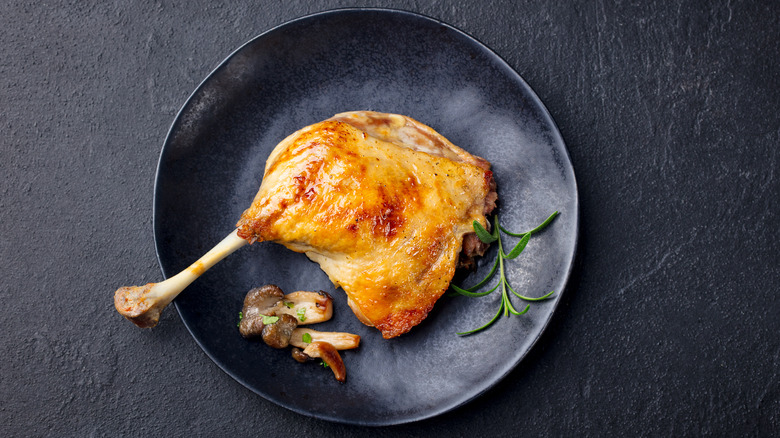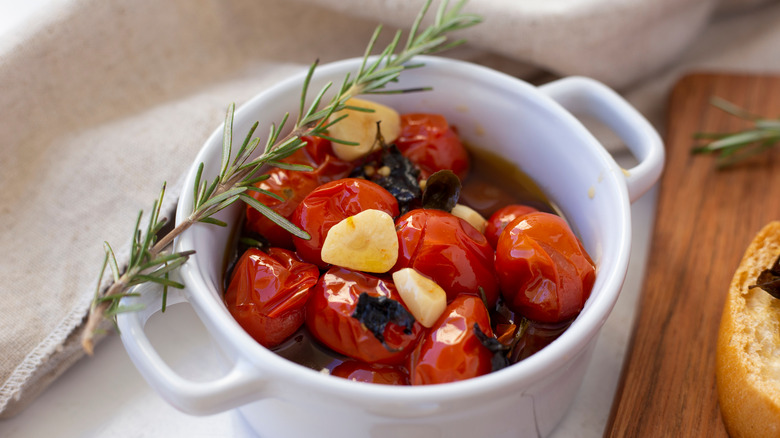Why You Should Let Confit Sit
Sometimes food acts as a good reminder to slow down. Abiding by that school of thought is the humble confit. Turning minutes into hours (and sometimes even days), confit is a method that teaches us about the impact that time can have on food — namely a savory leg of duck. While it might seem unusual, there is a reason why you should let confit sit.
If the very word sounds terrifying, let's put your mind at ease. Confit is synonymous with a culinary method. Serious Eats states that confit means slowly cooking food in a liquid (like syrup for fruits or fat for meats and vegetables) over a low temperature of about 250 F.
While this once was a method to preserve food, it's become a popular technique because it makes foods incredibly tender and moist. But that doesn't mean a tasty confit is dripping in grease. Instead, as explained by Epicurious, confit doesn't penetrate the meat but lets it bathe luxuriously in itself or in good quality olive oil that'll also be flavored in the process.
Confit gets better with time
Confit's melt-in-your-mouth effect is thanks to one thing: time. Since confit cooks over low heat for an extended period, the process has several effects on meat in particular. According to The New York Times, the longer a confit sits, the more intense and profound flavors will become since the confit is quite literally flavored by itself.
Another advantage of letting confit sit is that the meat will tenderize to a heavenly degree. Science of Cooking reports that because the meat is cooking at a slower rate, the collagen inside is more easily able to break down and move through the connective tissue, leading to a softer piece of meat. But that's not to say that a good rest won't make even the sturdiest vegetables mellow.
While confit can be said to age like fine wine, this is only partly true. It's best to keep it refrigerated in a sealed container for no longer than one month (via Bon Appétit). Just don't forget to give the meat a quick pan fry to crisp up the skin when you're finally ready to give your confit a taste.
As for the leftover fat, use it as a savory substitute wherever you would use oil or butter in a recipe.

